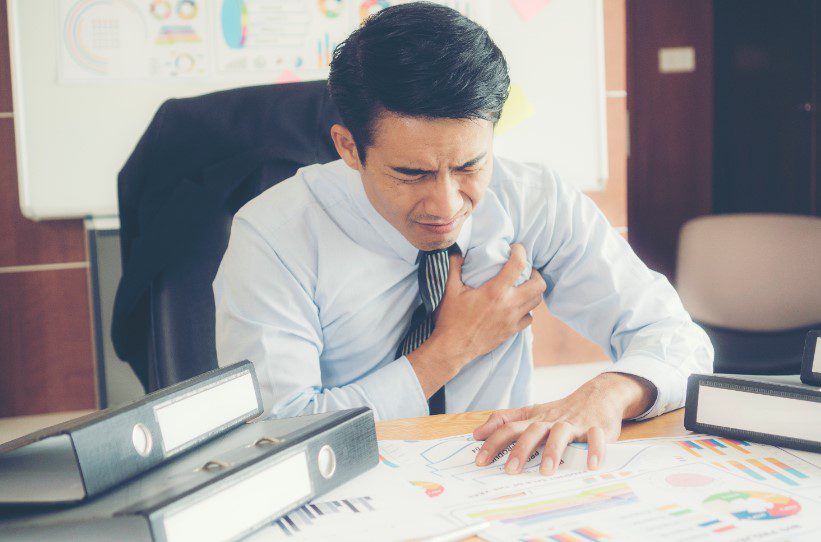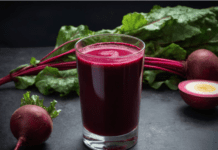Stroke Risk Factors
A stroke is a medical incident in which a blood vessel that leads to the brain becomes blocked or bursts.
These blood vessels may become blocked by a blood clot or sticky fat called plaque that builds up in vessels.
Blood vessels may burst if they are completely blocked or weakened.
Once a blood vessel cannot deliver the blood and oxygen it carries into the brain, or once it bursts, brain cells begin to die. This is called a stroke.
There are several types of stroke. They are characterized by what causes the stroke and how the stroke occurs.
TYPES OF STROKE
Ischemic stroke
These happen when a blood vessel going to the brain is blocked. About 87% of all strokes are this type.
Transient ischemic attack
These are sometimes called “mini-strokes” because they are temporary.
The clot or blockage lasts for an amount of time, passes, and blood resumes flow to the brain.
This type of stroke is often a warning that a more serious stroke is likely to happen.
Hemorrhagic stroke
This typically happens when a blood vessel leading to the brain bursts.
The most common type of weakening of a blood vessel that makes it burst and causes a stroke are aneurysms and arteriovenous malformations (AVMs).
Aneurysms are bulges that form in blood vessels. People are not generally born with an aneurysm.
They usually develop after age 40 and may continue as long as a person lives.
AVMs are a mass of blood vessels that develop abnormally and allow blood to dump into the brain. They are rare, and people who have AVMs are usually born with them.
Cryptogenic stroke
This is what doctors call a stroke when they cannot determine exactly what caused it.
Brain stem stroke
The brain stem is at the basis of the brain, and it controls things like breathing and blinking.
When a stroke occurs here, a person may have symptoms on both sides of their body and maybe paralyzed from just below the neck.
STROKE RISK FACTORS
Certain behaviors and habits may make it more likely for a person to have a stroke. The more of these behaviors an individual engages in, the more likely they are to have a stroke.
There are also factors that no one can control, such as genetics and gender, that make it more possible for an individual to have a stroke.
Stroke Risk factors for having a stroke include:
- age (as people age, the risk increases)
- gender (men are at a greater risk for stroke, but more women die from a stroke)
- smoking
- diabetes
- high blood pressure
- heart disease, especially atrial fibrillation
- race or ethnicity (Blacks, Alaska Natives, and American Indians are at higher risk than Hispanics, Asians, or whites.)
- family history of stroke
- alcohol and drug use
- sedentary lifestyle
- overweight
- stress
- depression
- high blood cholesterol
- unhealthy diet
Demographics
(CDC) confirms that stroke is the fifth leading cause of death in the United States. Approximately 795,000 individuals in the United States have a stroke each year, and nearly 140,000 Americans die from stroke each year.
Black people have a double risk of stroke than whites and have the highest death rate from a stroke of any racial group in the United States.
Every 40 seconds, someone in the United States has a stroke, and someone dies of a stroke every 4 minutes.
SYMPTOMS
Stroke symptoms can come on suddenly or gradually, and the type of symptoms an individual experience depends on the type of stroke they are having.
Symptoms can also vary from person to person, even if they have the same type of stroke.
General signs and symptoms of a stroke may include:
- confusion
- difficulty speaking or understanding speech
- paralysis of all or part of the body
- numbness in the face, arms, or legs
- paralysis or numbness in only one side of the body
- weakness
- difficulty breathing
- dizziness
- passing out
- problems with balance or coordination
- falling
- difficulty walking
- vision problems in one or both eyes
- severe and sudden headache
WHAT TO DO IF STROKE IS SUSPECTED
A stroke is a medical emergency. Getting help as fast as possible is very important. If someone thinks they are having a stroke or sees another person who may be having a stroke, they should immediately call emergency services.
Do not drive a person to the hospital. Let an ambulance respond so medical treatment can begin as soon as possible.
It can be tricky to know if symptoms are a stroke, so if any of the symptoms are present, call emergency services.
A quick way to remember symptoms of stroke is the acronym “F.A.S.T.”:
- F—Facial drooping on one side of the face or numbness on one side of the face. Ask the person to smile. If it is uneven or lopsided, it is a sign of a stroke.
- A-Arm weakness occurs, or one arm cannot be raised as high as the other. Ask the person to raise both arms. If one arm drifts downwards, it is a sign of a stroke.
- S—Speech becomes slurred, a person cannot repeat simple sentences, or speech is hard to recognize. Ask the individual to repeat a plain sentence and see if it can be understood.
- T—Time to call emergency services. If the person exhibits any of these symptoms, call emergency services and get them to the hospital, even if the symptoms go away.
COMPLICATIONS OF STROKE
While a stroke can be life-threatening, surviving a stroke may mean a person has remaining health issues and conditions.
Complications of a stroke include the following conditions and symptoms:
- Blood clots—After a stroke, a person may not be able to get up and move around for a while, leading to the formation of blood clots in veins, especially in the legs.
- Muscle weakness—Being immobile after a stroke can also lead to muscle weakness since the muscles are not being used.
- Inability to control the bladder—Stroke can affect the muscles that control the bladder and bowels. This may mean an individual cannot control their bladder or bowels. This may be temporary or long-lasting.
- Difficulty swallowing—Stroke can affect muscles in the mouth and throat and make it difficult to swallow.
- Pneumonia—If the muscles that control swallowing are weakened, it may cause an individual to choke on or breathe in food and liquids. If these items are inhaled deeply enough, they can travel to the lungs and cause pneumonia.
CAUSES
Many things may cause a stroke. Some of the most common causes include artery disease (atherosclerosis), heart conditions, and abnormal bleeding.
Atherosclerosis
Atherosclerosis an illness in which plaque builds up inside arteries. Plaque hardens over time and makes blood vessels become narrowed and eventually blocked.
When this happens in blood vessels in the brain or in vessels that lead to the brain, these blockages stop blood flow to the brain and cause stroke.
The back-up of blood inside these blood vessels may also cause the vessel to burst, leading to bleeding and stroke.
Blood clots (embolism)
Plaque can also break away from a vessel wall and block a blood vessel or invoke a blood clot to form.
Once a free-floating piece of plaque or a blood clot blocks a blood vessel leading to or in the brain, a stroke occurs.
Atrial fibrillation
Heart illnesses, such as irregular heartbeat (arrhythmia), can also cause blood clots to form and may lead to stroke.
One type of arrhythmia, called atrial fibrillation, is a common cause of strokes.
In people with atrial fibrillation, the top chambers of the heart (atria) beat irregularly. This causes blood to back up inside these chambers.
As blood pools and remains in the atria, blood clots can form. Once the blood flows out, the blood clots are carried with it.
If these clots travel through blood vessels that lead to the brain or blood vessels inside the brain, they can block these vessels and cause a stroke.
High blood pressure (hypertension)
Blood is forced through the vessels inside the body using pressure—blood pressure. If this pressure becomes too strong or high, that is hypertension.
Over time, hypertension can weaken small areas on blood vessels, and they may burst, causing bleeding.
Suppose this happens in vessels that lead to the brain or inside the brain that causes a stroke. Hypertension can also cause abnormal bundles of blood vessels called AVMs to rupture and bleed.
If this happens in or around the brain, it causes a stroke.
DIAGNOSIS
A stroke is diagnosed by a doctor using one or more examinations and tests. These methods include one or more of the following.
Medical history and physical examination
A doctor asks questions and collects information about a person’s family to discover a history of stroke in the family.
The doctor also collects information about the individual, such as heart disease, hypertension, or other risk factors for stroke.
The doctor also records information about any symptoms the person has had or is having.
The doctor also does a physical examination to check an individual’s mental status (e.g., are they confused, having trouble speaking or understanding speech, or having difficulty concentrating).
The doctor also assesses physical conditions, such as being dizzy, numb, having weakness in arms or legs, or unable to walk or stand. T
The doctor listens to the person’s heart and the blood vessels in the neck.
Tests
Doctors may order tests to assess blood flow in and to the brain and discover where the stroke happened and its severity.
Tests that may be performed include:
- Computed tomography (CT) scan of the brain—This painless and noninvasive test uses X-rays and computers to produce very detailed brain images. A CT scan can show if a stroke happened, bleeding in the brain, where this happened, and its seriousness. It can also show if other conditions may be causing symptoms. CT scans are often performed soon after a stroke.
- Magnetic resonance imaging (MRI)—This non-invasive and painless exam uses magnets and radio waves to produce images of the body’s internal organs. An MRI can show if there are changes to brain tissue and how severe these changes are. Doctors may request an MRI rather than a CT scan to assess a person following a stroke.
- Arteriogram—Arteriograms are images that help doctors assess blood vessels. Two types can be used to diagnose and assess stroke: CT arteriogram and MRI arteriogram. Both may be used to produce blood vessel images, see where blood clots are located, and review blood flow through blood vessels.
- Carotid ultrasound and carotid angiography—Both exams help doctors view and assess the carotid arteries, which are the main blood vessels inside the neck that delivers blood to the brain. Both tests are painless. Ultrasound uses sound waves to produce images, while angiography uses X-ray and dye to produce images. During carotid angiography, a doctor injects a substance called contrast dye into a person, often in the arm. This dye helps the blood vessels show up better on the images and helps doctors see blood moving through the brain.
- Heart tests—Doctors may perform tests to evaluate a person’s heart after a stroke. Two common heart assessments are electrocardiogram (EKG or ECG) and echocardiogram (ECHO). An EKG is a gentle test that uses small electrodes glued to the skin to produce an image of a person’s heartbeats. An ECHO is a painless test that uses ultrasound to produce images of the heart beating. These tests may be used if a person has atrial fibrillation or if a doctor thinks they may have it.
- Blood tests—A doctor can tell a lot about what has happened in a person’s body by analyzing the blood. Blood tests may as well help rule out other conditions that might be causing symptoms. For example, low blood glucose levels may cause symptoms like dizziness and trouble walking. Other blood tests measure platelets in the blood. Platelets help the blood clot, and abnormal levels of platelets may show if someone has a bleeding disorder making it more likely for them to have a stroke or if they have had a stroke. Other blood tests called prothrombin time (PT) and partial thromboplastin time (PTT) can also tell doctors if they have a bleeding or clotting disorder that may make it more likely for them to have a stroke.
TREATMENT FOR STROKE
Stroke treatment may depend on which type of stroke a person has had and the cause of the stroke. Treatment options include medications, medical procedures, and medical devices.
If a blood clot created the stroke, medications such as tissue plasminogen activator (tPA) might be prescribed.
This medication dissolves clots, and, if given within four hours of symptoms, it may significantly improve a person’s chances of recovery.
That is why it is important to get medical care as soon as possible if a stroke is suspected.
Some people cannot take tPA. For these individuals, doctors may give medications that stop platelets from clumping together (antiplatelet) or medications that prevent blood from clotting as easily (blood thinners).
Two medications that are often given are aspirin and clopidogrel.
Procedures that may be used to treat stroke include procedures to open blocked carotid arteries in the neck (e.g., angioplasty or endarterectomy).
Angioplasty uses a tiny balloon insert inside the vein to open it. During an endarterectomy, the carotid artery is cut open by the surgeon, and the plaque is removed.
A procedure called intra-arterial thrombolysis is performed to removed clots from blood vessels in the brain.
An elongated, thin tube, known as a catheter, is infused into a large blood vessel in the leg, and it is threaded through that vessel up into the brain.
Medication that dissolves blood clots is passed through the catheter, and the clot is dissolved.
An experimental treatment called mechanical clot removal in cerebral ischemia (MERCI) is being researched. During MERCI, blood clots are removed from the brain.
A catheter is inserted into the carotid artery and threaded into the vessels in the brain. Once the catheter reaches the area with the clot, the MERCI device is used to pull the clot through the catheter.
If a hemorrhage causes a stroke, treatment involves finding the source of bleeding and stopping the bleeding.
Medication lowering blood pressure may be prescribed. Surgery may also be performed, such as aneurysm clipping, coil embolization, or AVM repair.
Aneurysm clipping is brain surgery during which the surgeon locates the aneurysm and clips the leaking blood vessel.
Coil embolization involves inserting a catheter into a large blood vessel in the leg and moving it through vessels and the brain.
A coil is passed through the catheter and into the area that is bleeding. The coil causes the blood to clot there, stopping the bleeding.
Here are three main ways a stroke caused by AVM is repaired. A substance may be injected into the AVM to block blood flow, the AVM can be surgically removed, or radiation may be used to shrink the AVM.
Once a stroke has been treated, a doctor may help individuals change lifestyle habits such as starting a healthy diet, exercising, stopping smoking, and keeping diabetes under better control.
These changes may help reduce the risk of having another stroke. Some medications can help prevent a second stroke, including aspirin.
Aspirin should only be taken to prevent stroke if the patient has a history of strokes and if a doctor recommends it.
After a stroke, people may also have services, such as physical, speech, and occupational therapy, to help improve speech, movement, and other skills.
Resources
Websites
“About Stroke.” American Stroke Association. https://www.stroke.org/en/about-stroke (accessed April 23, 2021).
“Aspirin and Stroke.” American Stroke Association. April 22, 2020. https://www.stroke.org/en/life-after-stroke/preventing-another-stroke/aspirin-and-stroke (accessed April 23, 2021).
“F.A.S.T. Materials.” American Stroke Association. February 6, 2019. https://www.stroke.org/en/help-and-support/resource-library/fast-materials (accessed April 23, 2021).
“Stroke.” Mayo Clinic. February 9, 2021. https://www.mayoclinic.org/diseases-conditions/stroke/symptoms-causes/syc-20350113 (accessed April 23, 2021).
“Stroke.” National Heart, Lung & Blood Institute. https://www.nhlbi.nih.gov/health-topics/stroke (accessed April 12, 2021).
“Stroke Facts.” Centers for Disease Control and Prevention. March 17, 2021. https://www.cdc.gov/stroke/facts.htm (accessed April 23, 2021).
“Stroke Symptoms.” American Stroke Association. https://www.stroke.org/en/help-and-support/resource-library/fast-materials (accessed April 23, 2021).
Organizations
American Stroke Association, 7272 Greenville Ave., Dallas, TX, 75231, 800-242-8721, https://www.stroke.org.
National Heart, Lung & Blood Institute, Building 31, 31 Center Drive, Bethesda, MD, 20892, 301-592-8573, https://www.nhlbi.nih.gov.








